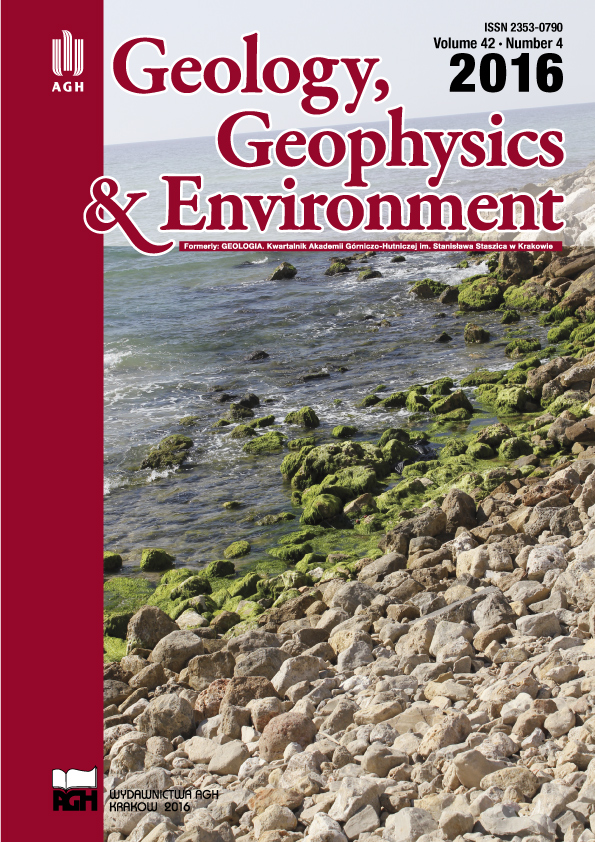3-dimensional surface magnetic susceptibility distributions with depth to investigate anthropogenic pollutants boundary in Abuja Metropolis
Main Article Content
Keywords
vertical distribution, soil pollution, magnetic susceptibility, anthropogenic pollutants, Abuja
Abstract
Changes in the magnetic susceptibility of topsoil, especially in urban areas, are greatly affected by the deposition of anthropogenic metallic dust arising from industrial activities, the burning of fossil fuels, car wear, and tyre abrasion. In this study, magnetic susceptibility measurements were carried out in vertical soil profiles of 30.0 cm depth from the surface at 10.0 cm intervals in about 431 locations within the Abuja metropolis with a view to investigate the penetration ability of magnetic pollutants in the ground. From the obtained data, 3-D surface contour maps were plotted for different depths. The results show a magnetic susceptibility decrease from the surface down the ground to the depth of 30.0cm; most of the recorded susceptibilities were of an anthropogenic origin rather than pedogenic activities. This indicates that the anthropogenic dust depositions are mostly a surface phenomenon and may therefore not pose a risk to groundwater aquifers and near surface wells.
Downloads
References
Chaparro M.A.E., Gogorza C.S.G., Chaparro M.A.E., Irurzun M.A. & Sinito A.M., 2006. Review of magnetism and heavy metal pollution studies of various environments in Argentina. Earth Planets Space, 58, 10, 1411–1422.
Dearing J.A., 1999. Environmental Magnetic Susceptibility: Using the Bartington MS2 System. Chi Publishing, Kenilworth, U.K.
Gautam P., Blaha U., Appel E. & Neupane G., 2004. Environmental magnetic approach towards the quantification of pollution in Kathmandu urban area, Nepal. Physics and Chemistry of the Earth, parts A/B/C 29, 973–984.
Georgeaud V.M., Rochette P., Ambrosi J.P., Vandamme D. & Williamson D., 1997. Relationship between heavy metals and magnetic properties in a large polluted catchment: The Etang de Berre (south of France). Physics and Chemistry of the Earth, 22, 1–2, 211–214.
Hunt A., Jones J. & Oldfield F., 1984. Magnetic Measurements and Heavy Metals in Atmospheric Particulates of Anthropogenic Origin. Science of the Total Environment, 33, 129–139.
Kim W., Doh S. J., Park Y. H. & Yun S. T. 2007. Two-year Magnetic Monitoring in Conjunction with Geochemical and Electron Microscopic Data of Roadside Dust in Seoul, Korea. Atmospheric Environment, 41, 7627 – 7641.
Knab M., Appel E. & Hoffmann V., 2001. Separation of the anthropogenic portion of heavy metal contents along a highway by means of magnetic susceptibility and fuzzy c-means cluster analysis. European Journal of Environmental Engineering and Geophysics, 6, 125–140.
Kogbe C.A., 1976. The Cretaceous and Paleogene sediments of southern Nigeria. [in:] Kogbe C.A. (ed.), Geology of Nigeria, Elizabethan Publishing Company, Lagos, 325– 334.
Malomo S., Olorunmiwo M.A. & Ogunsanwo O., 1983. Engineering geology mapping in terrains of tropical weathering: an example of Abuja, Nigeria. Engineering Geology, 19, 133-148.
Petrovsky E. & Ellwood B.B., 1999. Magnetic Monitoring of Pollution of Air, Land and Waters. [in:] Maher B.A. & Thompson R. (eds.), Quaternary Climates, Environments and Magnetism, Cambridge University Press, Cambridge, 279–322.
Charzyński P., Hulisz P. & Bednarek R. (eds.), 2013. Technogenic soils of Poland. Polish Society of Soil Science, Toruń.
Spiteri C., Kalinski V., Rosler W., Hoffmann V. & Appel E., 2005. Magnetic screening of a pollution hotspot in the Lausitz area, eastern Germany: correlation analysis between magnetic proxies and heavy metal contamination in soils. Environmental Geology, 49, 1, 1–9.
Thompson R. & Oldfield F., 1986. Environmental Magnetism. George Allen and Unwin, London.
Zhang C., Huang B., Li Z. & Liu H., 2006. magnetic properties of highroad-side pine tree leaves in Beijing and their environmental significance. Chinese Science Bulletin, 51, 24, 3041–3052.


